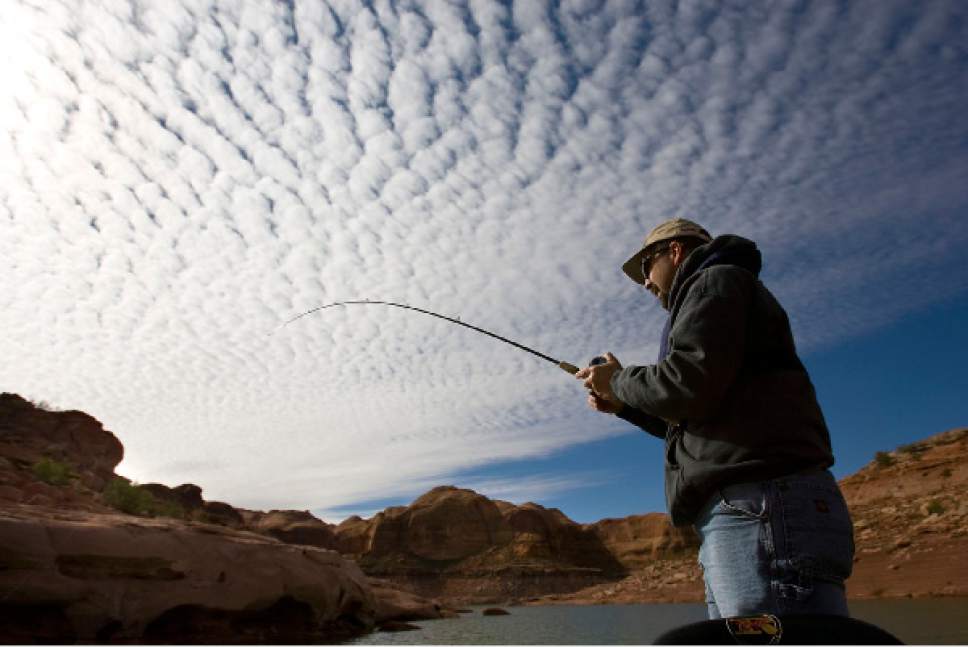This is an archived article that was published on sltrib.com in 2017, and information in the article may be outdated. It is provided only for personal research purposes and may not be reprinted.
As the weather warms, spring fishing at Lake Powell typically starts to heat up as well.
According to longtime Lake Powell fishing guru Wayne Gustaveson, the best spring fishing happens when the water temperature passes the 64-degree mark for the first time. As of last week, the temperature ranged between 53 and 57 degrees, so there is a ways to go for optimum conditions.
That said, the biologist said largemouth bass and crappie are getting ready to spawn. As the water temperature begins to rise, the male bass will move into shallow water and begin excavating nests in rocky areas where the water depth is 3 to 5 feet. Those nests can be visible in clear water. Casting a top water lure toward the aggressive male bass can be a fun and successful fishing method.
Bass angling should really heat up in the next two weeks. When the lake begins to rise the last week of April, it will muddy the water.
Warming should also trigger walleye fishing. Once the walleye have completed their spawning, they will begin to focus on finding food. Walleye fishing should be good from April 15 to May 30.
"The secret to catching them is to keep the bait near the bottom and tip your plastic lure or worm harness with live night crawlers," Gustaveson writes. "Remember that the tagged walleye contest is still happening. Catch a tagged fish and win a prize if you are a registered contestant."
Striped bass are separated into four groups.
One includes adult school fish looking for forage in deep water. These schools are easy targets for bait fishermen, who drop bait down 30 to 60 feet.
The second includes mature fish and male stripers preparing to spawn for the first time. They are holding in shallow open water and are visible on graphs or in clear water.
Another group are mature adults who have found shad to eat all winter and live in the backs of major murky water canyons, where they can be trolled or spooned when found.
Group four includes individual stripers that are too slow to compete within a school so they have ventured out on their own.
For information on the walleye contest or other Lake Powell species, visit http://wayneswords.com/index.php?option=com_content&view=category&id=97&Itemid=102.





